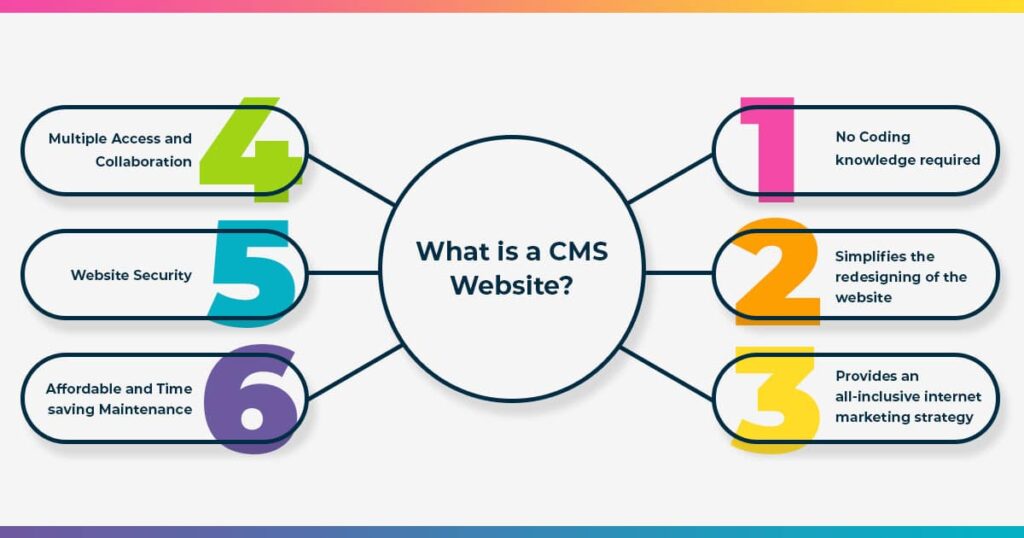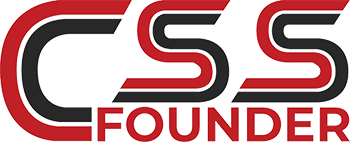
CMS means content management system. It is a whir word in the development of websites. Content Management System (CMS) is a software that help the website owner to create, edit or publish digital content. In a simple language content management system is a software or tool that helps us to build a website without needing to write code from scratch or even without any code. Content management systems are also used by the companies and organizations that have more needs to update the content on the website. A content management system is a software that enables multiple functions for multiple users to manage content, data or information from a web site by any internet application. Different users can be assigned different permissions allowing them to access certain sections, or all the contents of the project. Content management system help users to manage and maintain the flow of the project/ Website in a collaborative environment through a central interface. Generally, content management systems are based on the web and help us to post blogs, news, and e-commerce. The Content in the CMS means editing, creation of reports, collaboration, distribution of data and information. E.g. Blogs website, blog site are the one which need a lot of maintenance to remain constant and relevant to the users and reader. There may be a lot of content that need to be managed by many people so probably we need Content Management Systems to make it easy.
According to the CSS Founder – Web design company in Toronto.
What is Content?
Content is mainly refers to the information that is produced through the process and intended for publication. It can Text, Images, Graphics, Video etc. Or we can say a content is anything that can be stored and managed in e-format.
Types of Content Management Systems.
- Web Content Management (WCM): it help in maintaining, changing and controlling the content on a webpage.
- Enterprise Content Management (ECM): is also known as the Document management system or record management system is the process of managing and controlling the entire lifecycle of and enterprise or an organization’s content including document, spreadsheets etc.
- Digital Asset Management (DAM): is used to store, share and organize all the digital content in a secured and centralized location.
- Records Management (RM): This is used for the management of the transactional information and other record for a business operation.
Content Management Systems Available
Now we are pretty aware about the Content management system. Let us have a look on different Content management systems available.
WordPress
WordPress (WP), started in 2003 as a platform for the blogs. Over the years WordPress has probably become the most popular content management system in the world. Most of the organizations are using WordPress for their content management. So what make WordPress so popular among the user? Well, first of all, it is really really very easy to use. By using WordPress for creating website you do not need any knowledge of programming or technical skills. For using WordPress all you have to do is to download and install it, and then configure the options. There are thousands of free templates available there to choose and make a web site. WordPress has framework that is flexible and can be customized as per the need. There are many plugin available using which we can have access to many features of WordPress. So using WordPress we can develop website without hiring and web developer who cost Thousands of Dollar.
Pros
- Huge developer community with plenty of documentation and tutorials available.
- Free and paid plugins both are available and specialized themes that make creators possible to create any kind of site.
- User-friendly for managing content.
Cons
- Can be overkill for basic sites.
- Can have a lot of security issues as it is very vulnerable to attack without additional security measures.
- No official support there’s a little chance for an official response.
Drupal
Drupal is another content management system which is open source and used by a number of popular Web sites. The White House web site is also been managed by using Drupal. Drupal offer you many feature that WordPress won’t. Drupal allow us to control over the URL structure. The management of the content is so easy for the users. This is best for the Blog websites. Drupal is Search Engine Friendly CMS. Also it has a very great feature that is unique which is content construction kit which allow us to customize each page of content such as a blog, podcast, etc.
Pros
- Sturdy community support via IRC channels or face-to-face meet ups.
- Highly extensible with more than 6,000 modules.
Cons
- Can be overkill for simple sites.
- Few free and high-quality themes.
- Fairly complicated to use.








